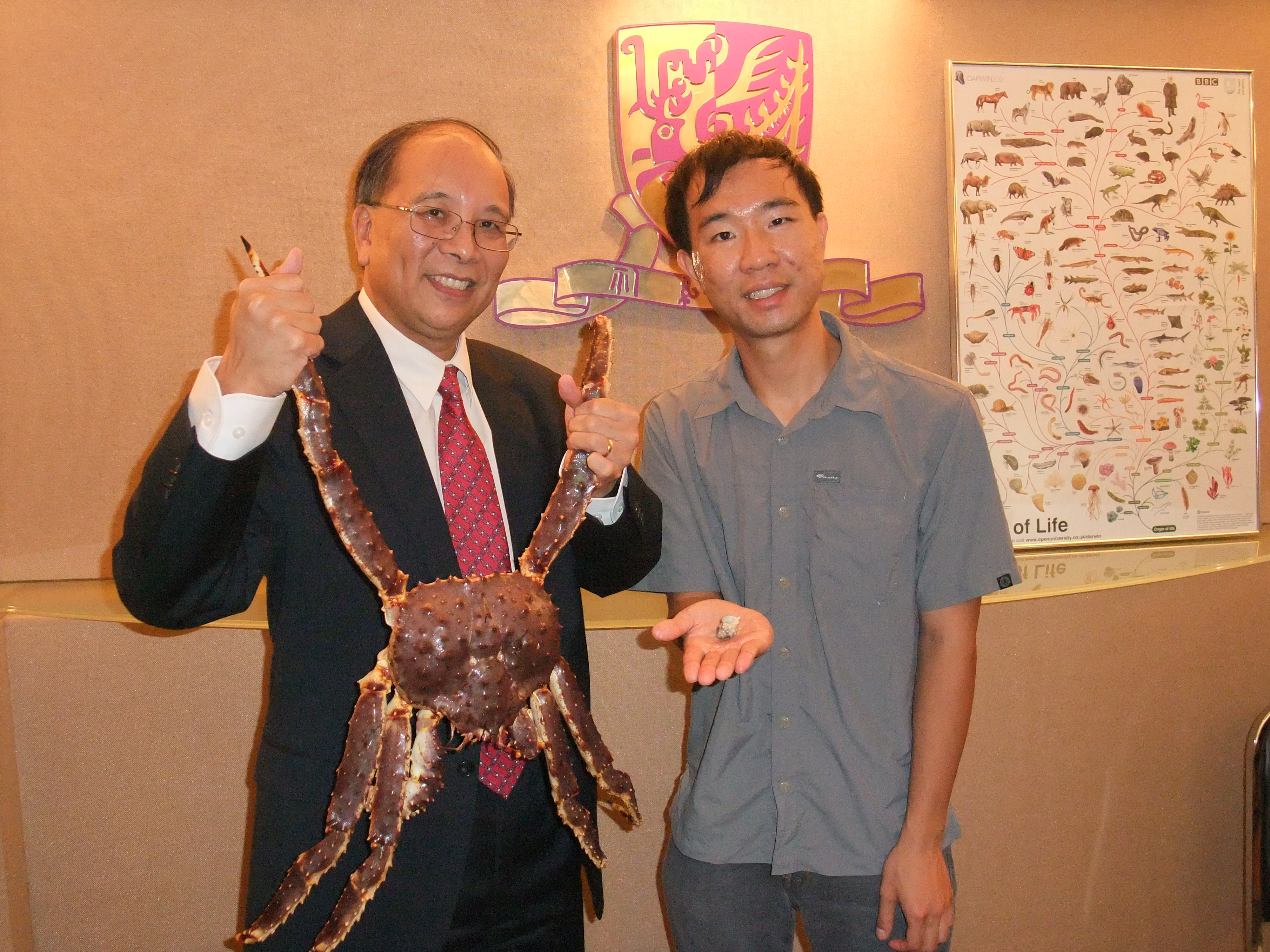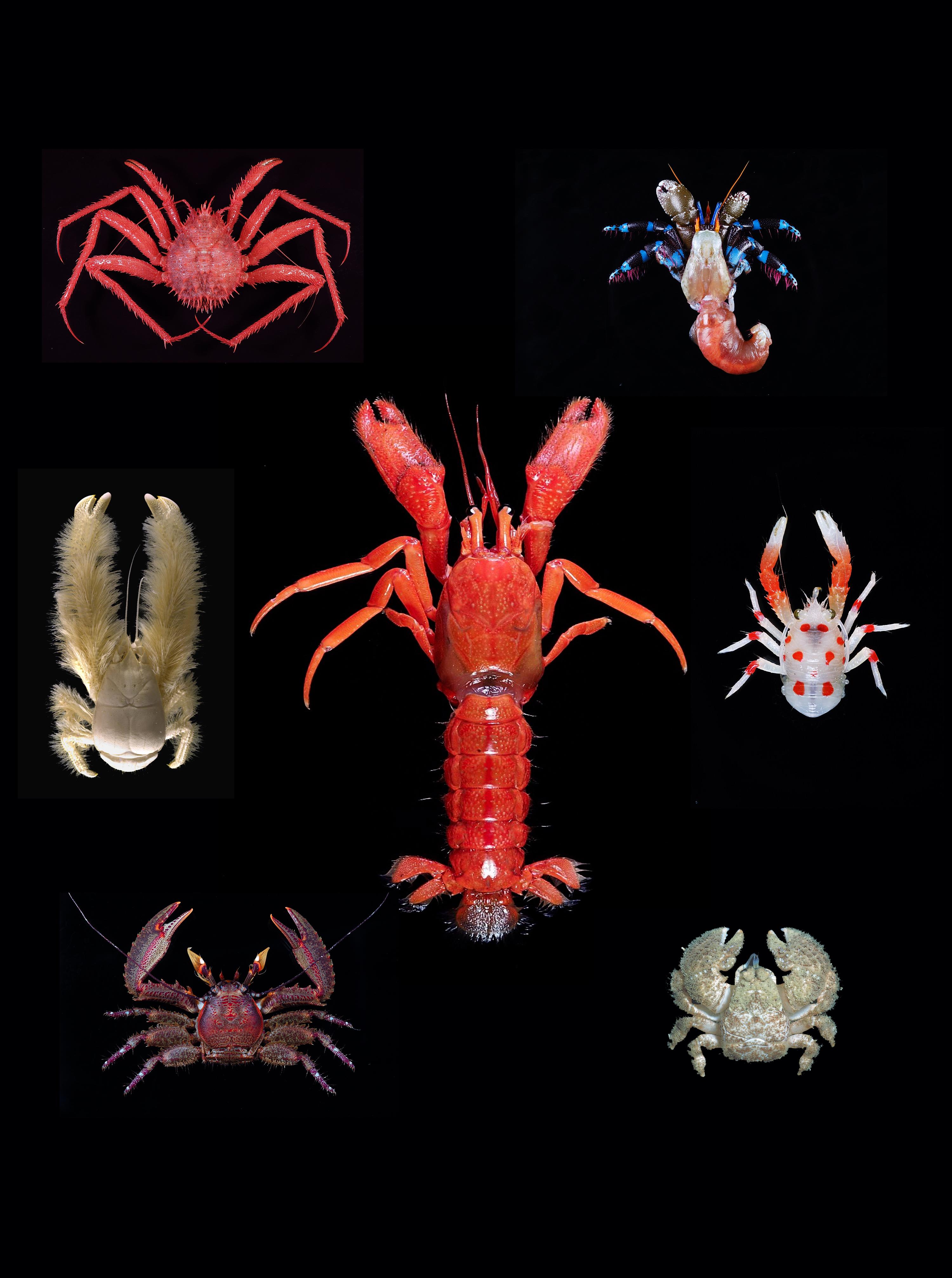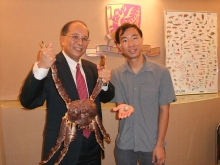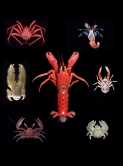CUHK
News Centre
CUHK Scientists Reveal Genetic Link between Dissimilar Forms of AnimalsMajestic King Crabs Evolved from Tiny Hermit Crabs
When you are enjoying a delicious meal of Alaskan or Japanese king crabs, you probably are not aware of the fact that what you are eating, scientifically speaking, are not really 'crabs', in the same way as are the Chinese mitten crab, the common mud crab and other swimming crabs. King crabs are actually close relatives of hermit crabs, and belong to a group known as the anomurans, a group of crustaceans including hermit crabs and other forms that have a crab-like (such as the king crabs and porcelain crabs) or lobster-like (called squat lobsters) appearance. Compared to true crabs, the last pair of legs of anomurans is very small and their tails are often folded under the body. Interestingly, it has been long proposed that king crabs, which may weigh more than 18 pounds and measure up to 6 feet across the legs, are not only related to tiny hermit crabs generally weighing less than a quarter of a pound, but in fact have evolved from a hermit crab-like ancestor. This 'hermit to king' hypothesis, however, has been controversial for at least two decades.
To resolve this issue, Prof. Chu Ka-hou, Director of the School of Life Sciences and Simon F. S. Li Marine Science Laboratory at The Chinese University of Hong Kong (CUHK), worked in collaboration with his PhD graduate Dr. Tsang Ling-ming, Prof. Chan Tin-yam from Taiwan Ocean University and Dr. Shane Ahyong from the Australian Museum in Sydney to develop a DNA sequence analysis for the crustaceans. With new evidence from DNA analysis, they have confirmed that hermit crabs indeed gave rise to king crabs. More importantly, this study indicates that the hermit crab is the ancestor of not only the king crab, but also almost all other anomurans, including the squat lobsters. That is, it is not just 'hermit to king' but 'hermit to all (anomurans)'.
Professor Chu said, 'We got this interesting result by DNA sequence analysis of nuclear protein-coding gene markers we newly developed for the crustaceans. The crab-like and squat lobster forms evolved more than once from their hermit crab ancestors. This fact shows that the body plan of the hermit crab is highly flexible and parallel evolution to crab-like forms is common in this group.' Parallel evolution refers to the independent evolution of similar characteristics, in this case the different crab-like forms from hermit crabs. Moreover, the true crabs and crab-like anomurans are also examples of parallel evolution. This example also shows that similarity in appearances between animals can be a deceptive indicator of relatedness.
This study has just been published in Systematic Biology, the top journal in the field of evolutionary biology, in August 2011. Before it was formally published, the results had been highlighted in a New York Times column on 'Remarkable Creatures' contributed by Prof. Sean Carroll of the University of Wisconsin, Madison. Professor Carroll states that 'The surprising stories of king crab and squat lobster evolution from hermit crab ancestors are examples of a frequent lesson in the era of DNA-based genealogy – looks can be deceiving. Very dissimilar forms can evolve from a given type of ancestor, and similar-appearing forms can evolve entirely independently from unrelated ancestors.' Together with his collaborators in the USA, United Kingdom, Germany, Australia, Singapore, mainland China and Taiwan, Professor Chu will continue to chart the evolutionary history of crustaceans, so as to reveal other interesting stories of evolution.
Prof. Chu Ka-hou (left) and Dr. Tsang Ling-ming show the dramatic difference in size between king crabs and hermit crabs.
Prof. Dickon Ng, Associate Dean, Faculty of Science; Prof. Chu Ka-hou, Director of the School of Life Sciences and Simon F.S. Li Marine Science Laboratory; and Dr. Tsang Ling-ming, postdoctoral fellow, School of Life Sciences, CUHK









